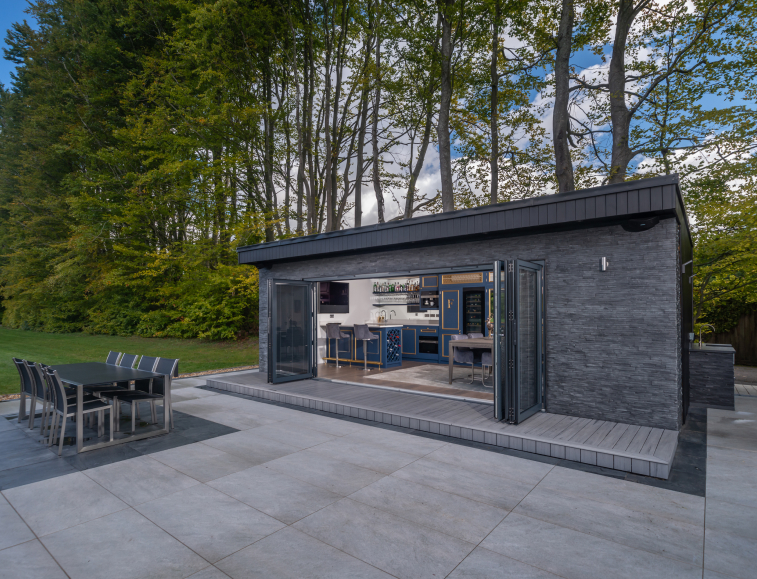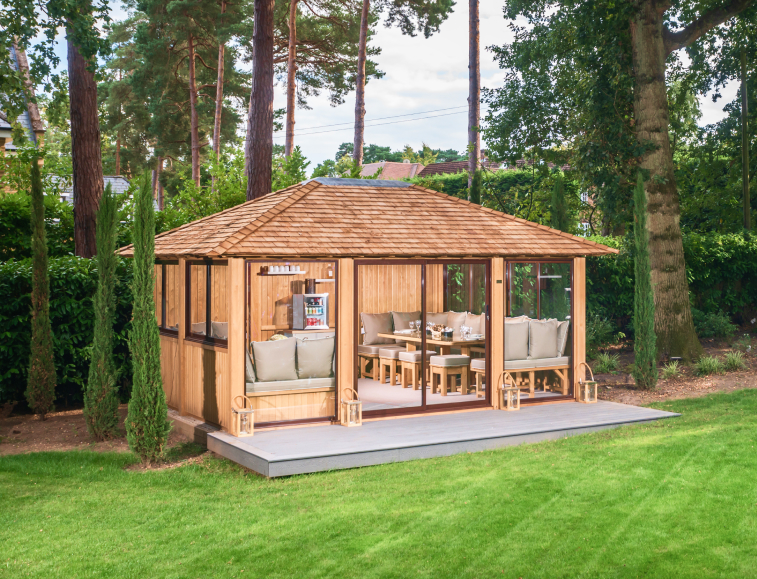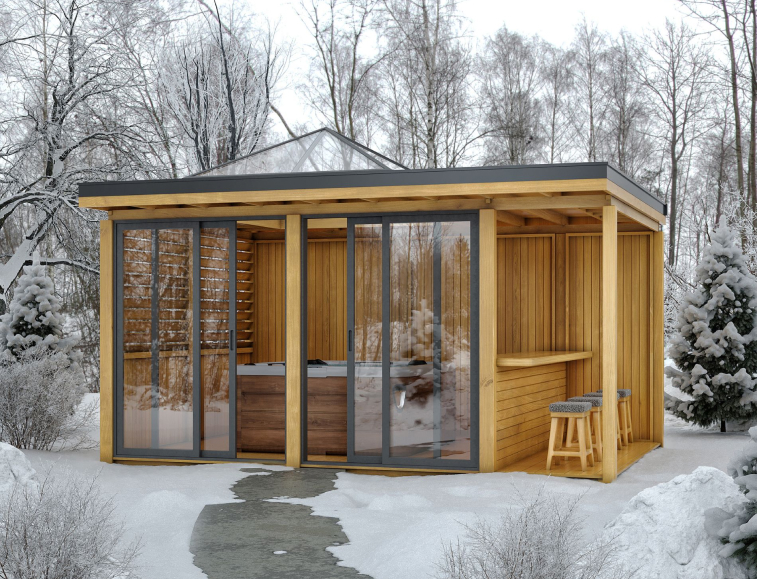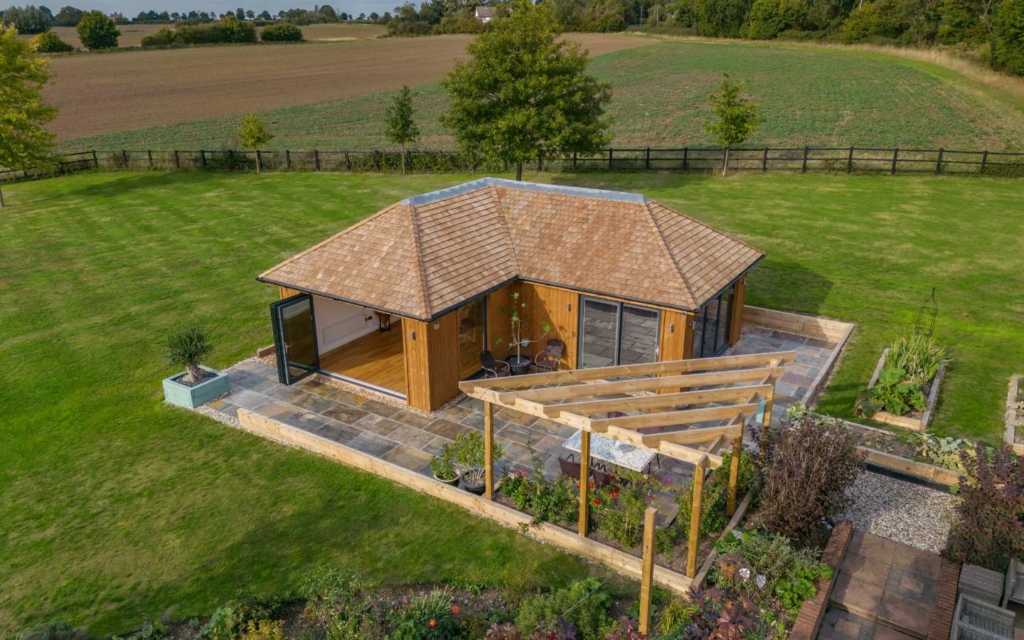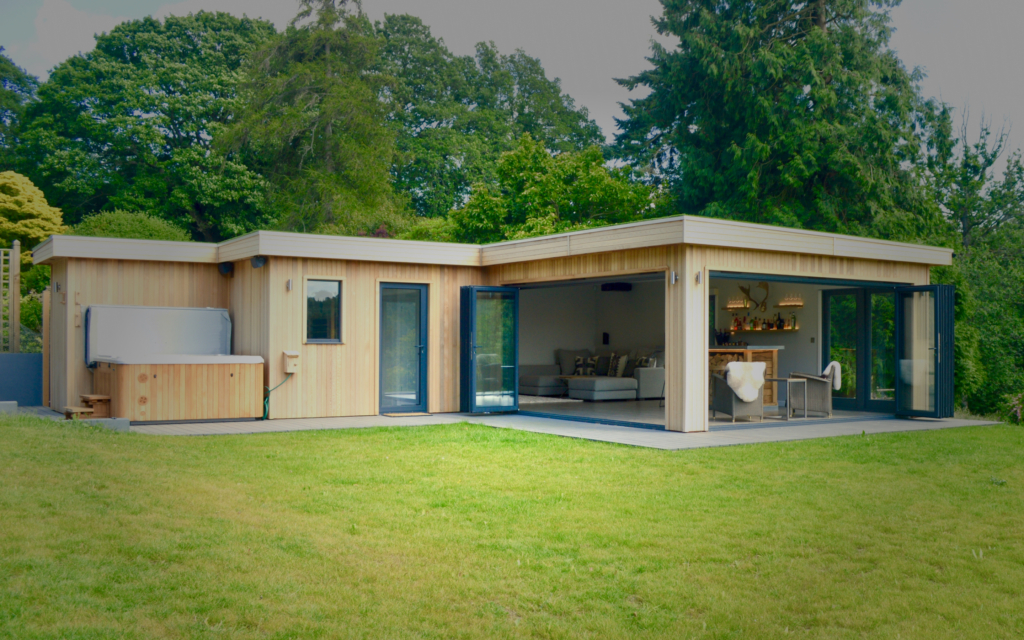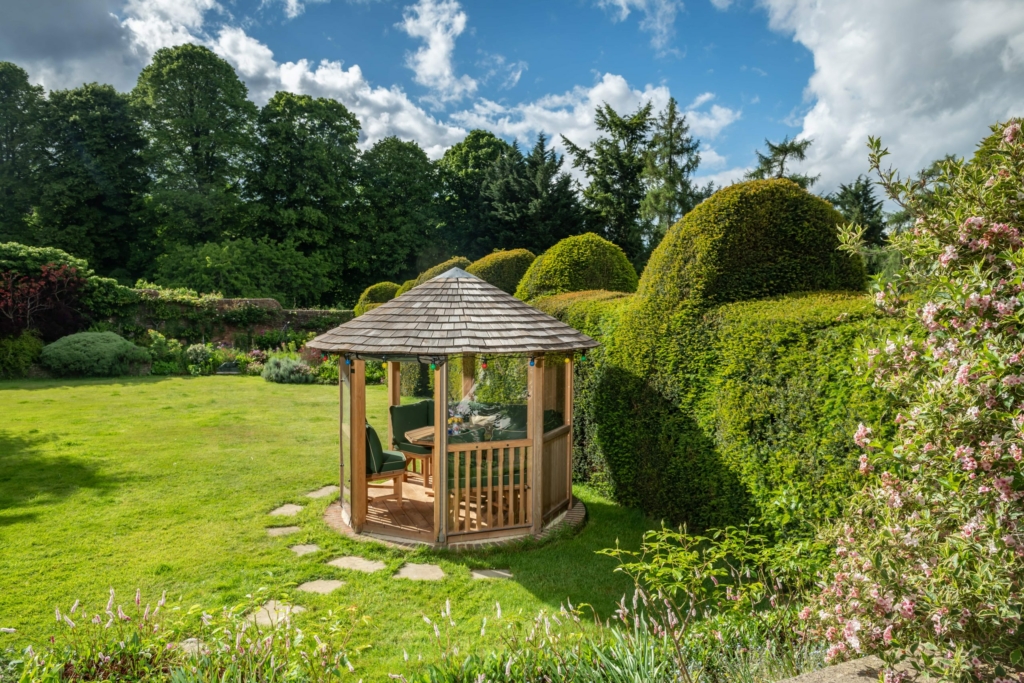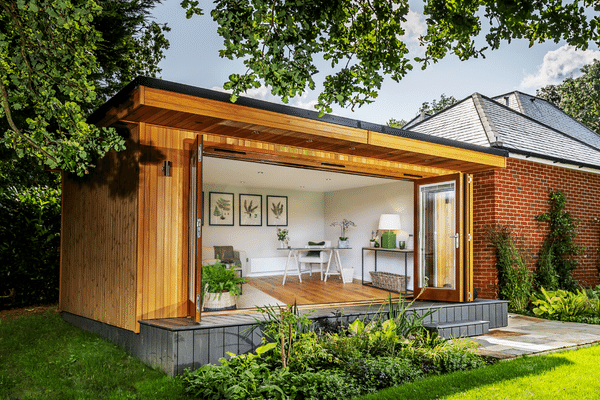If you want your garden room to withstand the unpredictable British weather, remain structurally sound and look fantastic for many years to come, you will need to install high quality garden room foundations. Without a strong garden room base and foundation system, your garden building could suffer long-term issues, such as subsidence, or worse, be upheaved in a storm and cause serious damage to your home and pose major safety issues. We will discuss the most common garden room foundation types and help you make the best choice for your outdoor building. We will cover…
-
- How Your Site Dictates The Type of Foundation Used
-
- Concrete Slab
-
- Plinth
-
- Ground Screws
-
- Concrete Pile
How your Site Dictates the Type Foundation Used
Where you want to build your garden room will have an impact on the type of foundation you will require due to the various types of ground materials and soil conditions. In most cases, you will require a site-visit from your developers to assess the soil or ground conditions you wish to build on and choose a suitable foundation system.
At Crown Pavilions, we offer a site assessment as part of our process to determine which type of foundation is best for your build. This ensures our garden rooms are built on solid foundations and will last in the long-run. The main consideration is to make sure the ground is clear, flat and level and not prone to flooding. Some developers will choose a foundation based solely on your description of the grounds. The main issues with this include potential delays due to unforeseen circumstances. We recommend that you always have your foundations assessed by a professional to avoid any disappointment or unexpected costs.
Concrete Slab
Concrete slabs have been used for many years and are often still the foundation of choice when building a garden room.
Before installing concrete slabs, all grass or vegetation must be removed from the site and the ground excavated, which involves digging a hole where the room is to be built. The depth of the hole will depend on the size and height of your building. The hole is then filled with hardcore, which is a mixture of broken up concrete, bricks and stone. A good rule of thumb is that your concrete slab base should be approximately 50mm bigger than the garden room.
A timber framework is then erected and a damp proof membrane (DPM) is laid down; this can be made either from mineral wool or cellulose to help insulate the garden room. Some garden rooms may also require steel reinforcement, especially for larger or heavier designs. Now, the concrete can be poured and left to set. Once set, the timber framework can be removed and the site is ready to be built on.
Concrete slabs make for a sturdy and reliable garden room foundation system however, you should always hire a professional for installation to ensure that it is level and provides proper structural integrity. Manual labour and construction materials can be expensive but the results are worth it.
One note of caution with concrete slabs: they are not suitable if you have trees which will overhang the roof of your garden room. The concrete has the potential to affect the root systems of the trees and could kill them. You should be especially wary of this if you have a Tree Preservation Order (TPO) on any of the trees. Contact your local planning authority to find out if you have a TPO on any of the trees on your property.
At Crown Pavilions, we can advise on all aspects of groundworks and help you choose the right garden room foundations for your build.
Plinth
Plinths are also a popular type of garden room foundation. A plinth is typically made from reinforced concrete and helps distribute the weight of the garden room across a larger surface. The great thing about plinths is that they are fairly simple to install and, unlike concrete slabs, do not require any setting time. They are effective at withstanding high amounts of pressure and movement, and preventing any structural damage to your garden room. Plinths can also easily be removed from the ground without leaving a trace, making them an eco-friendly option, too.
Please note that plinths are only suitable for smaller projects.
Ground Screws
Using ground screws for building foundations is a fairly new technique, however is rapidly growing in popularity since it replaces the need to dig up your garden and lay down concrete. This makes it a less disruptive and time-consuming method in comparison to concrete slabs.
Ground screws are large screws that are driven roughly 1.2m to 5.0m into the ground using specialist equipment and causing minimal damage. Brackets are then installed onto the screws and provide a base to build your timber frame for your garden room. Ground screws require expert installation and appropriate soil compaction to support the screws, therefore may not always be suitable for your garden room foundations if you have loose soil in your garden.
Ground screws can be installed in one day with no setting time, meaning you can get building without delay. Best of all, ground screws allow you to build on uneven surfaces which would otherwise be dead space in your garden. They are also an option to protect the root system of any trees which will overhang your garden room
Concrete Pile
Concrete piles are built using a combination of concrete slabs and plinth foundations, and involve driving a steel structure deep below the ground then filling it with concrete. This is effective at providing a sturdy base and supporting the weight of the garden room. The size and depth of the pile will depend on the ground conditions and the type of structure you are building, with larger builds needing deeper piles. There are two different types of concrete piles: precast and cast-in-place. Precast concrete piles are set before being submerged into the ground whereas cast-in-place concrete piles are poured and set on the building site.
Concrete piles are highly water and chemical resistant therefore do not change shape below the soil. They can withstand heavy loads which makes them suitable foundations for garden rooms and even larger builds. That being said, concrete piles are extremely heavy and, as such, require heavy-duty equipment for transportation and handling. This can make installation extremely costly, especially for precast piles. Although precast piles can be more expensive, they are a great option if you are looking for a quick build process as there’s no need to wait for the concrete to set!
Your Perfect Garden Room With Crown Pavilions
At Crown Pavilions, we are the UK’s leading provider in luxury garden rooms and gazebos. We offer a beautiful range of garden room designs to suit all outdoor spaces and styles. Our experienced TRADA (Timber Research And Development Association)-certified team design, deliver and install your garden room all within a matter of weeks so you can enjoy your new space as soon as possible.
Please get in touch with our team to arrange a site visit or find out more about our stunning garden room collection.

